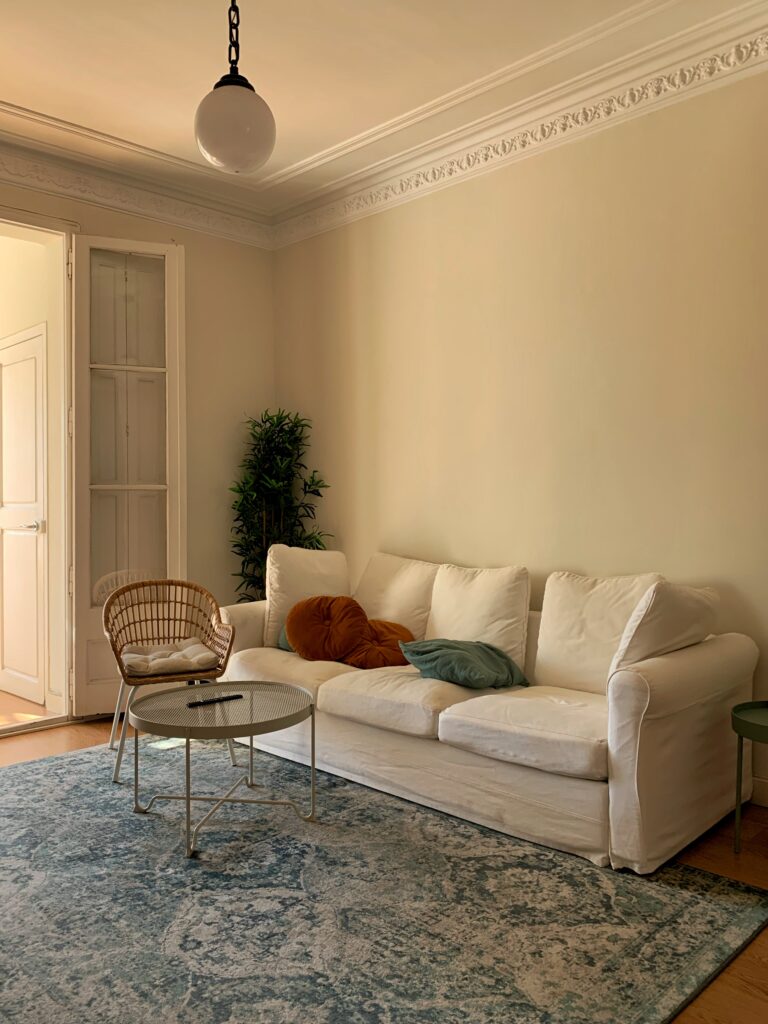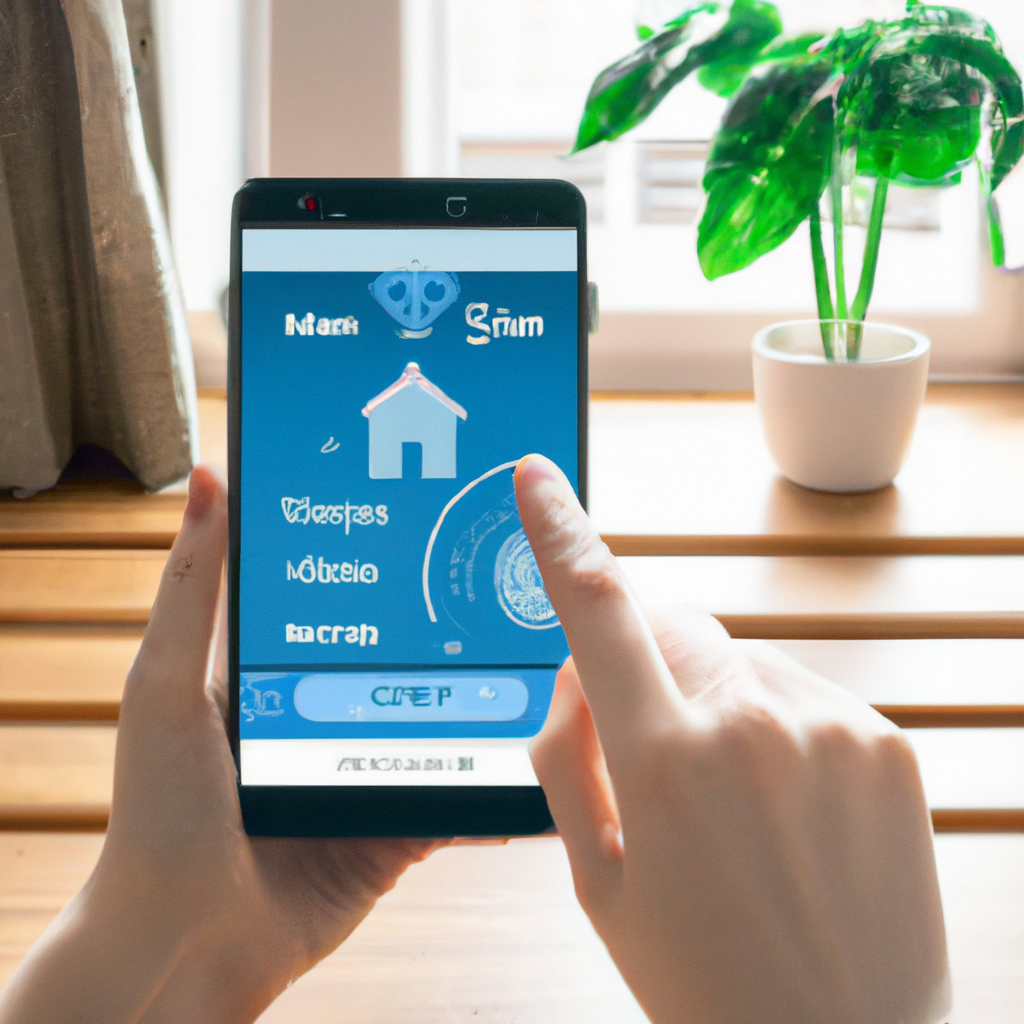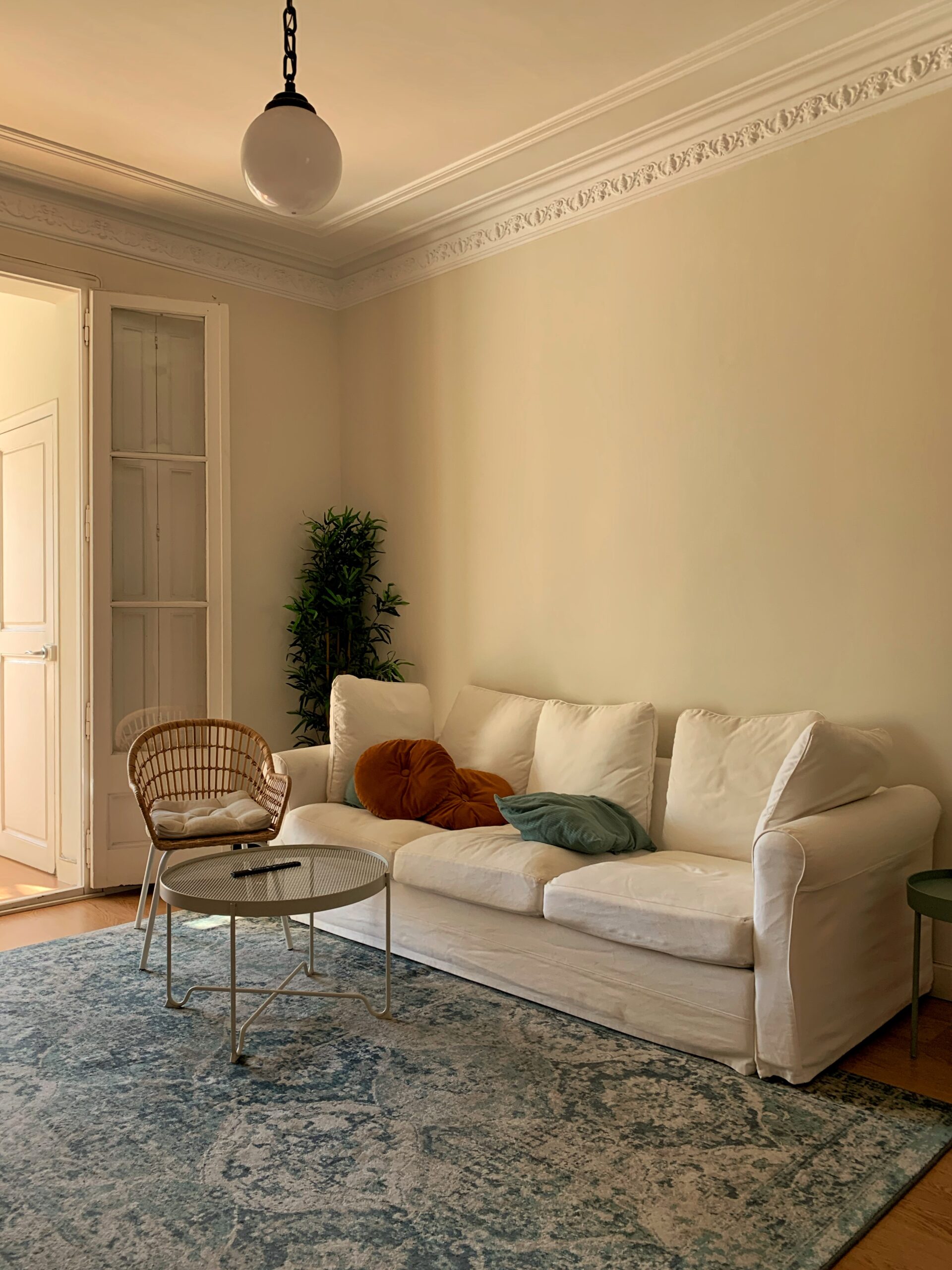Have you ever wondered how to make your smart home even smarter? Look no further – we’ve got you covered! In this beginner’s guide, we will walk you through the step-by-step process of setting up and customizing automation routines in your smart home. From controlling your lights and thermostat to scheduling daily tasks, we’ll empower you with the knowledge and skills to maximize the convenience and efficiency of your smart home. So, get ready to transform your living space into a truly automated haven. Let’s dive in!
Choosing the Right Smart Home System
Setting up a smart home can offer numerous benefits, from increased convenience to improved energy efficiency. However, with so many options available, it can be overwhelming to determine which smart home system is right for you. Understanding the different types of systems is crucial in making an informed decision.
There are two main types of smart home systems: hub-based and hubless. Hub-based systems rely on a central hub device to communicate with and control all smart devices in your home. On the other hand, hubless systems connect directly to your home network, allowing you to control each device individually. To decide which type is best for your needs, consider factors such as the number of devices you plan to connect, your desired level of customization, and your technical expertise.
Researching and Comparing Available Options
Once you understand the different types of smart home systems, it’s time to start researching and comparing the available options. Begin by reading online reviews and articles to get an idea of the features and capabilities of each system. Pay attention to the user experience, ease of setup, and overall reliability.
It’s also worth considering the compatibility of the smart home system with the devices you already own. Check whether your preferred system integrates seamlessly with popular brands such as Amazon Alexa, Google Assistant, or Apple HomeKit. Compatibility plays a crucial role in ensuring all your smart devices work harmoniously together.

Considering Compatibility with Existing Devices
Compatibility is a crucial aspect to consider when setting up your smart home. Before investing in a smart home system, take inventory of the devices you already own and use regularly. Ensure that the system you choose is compatible with those devices to avoid any compatibility issues down the line.
If you already have devices that use different platforms, such as Amazon Alexa or Google Assistant, it’s essential to choose a system that integrates seamlessly with these platforms. This integration will allow you to control all your devices using a single voice assistant or app, making your smart home experience more streamlined and user-friendly.
Evaluating the Ease of Setup and Use
When setting up your smart home, ease of setup and use is a crucial factor to consider. Look for systems that offer a straightforward installation process and provide clear instructions. Ideally, the system should come with user-friendly software or an app that simplifies the setup process and allows for easy customization.
Consideration should also be given to the user interface of the system. A well-designed and intuitive interface can make a significant difference in your ability to navigate and control your smart home efficiently. Look for systems with user-friendly interfaces that allow you to easily monitor and control your devices from a central hub or a mobile app.

Setting Up Your Smart Home Hub
Now that you’ve decided on the right smart home system for your needs, it’s time to set up your smart home hub. The hub acts as the central control unit that connects and manages all your smart devices. Here’s a step-by-step guide to help you get started:
Selecting a Central Hub Device
Choose a central hub device that is compatible with your chosen smart home system. The hub device will be responsible for communicating with and controlling all your connected devices, so it’s important to select one that meets your specific requirements. Consider factors such as the number of supported devices, connectivity options, and any additional features that may be important to you.
Connecting the Hub to Your Home Network
To ensure seamless communication between your smart devices and the hub, you’ll need to connect the hub to your home network. Most hubs can be connected via Ethernet or Wi-Fi, so choose the method that best suits your setup. Follow the manufacturer’s instructions to establish a stable and secure connection between your hub and home network.
Installing and Configuring the Hub’s Software or App
Once your hub is connected to the network, you’ll need to install and configure the accompanying software or app. This software will serve as the interface for controlling and customizing your smart home devices. Follow the provided instructions to download and install the software or app on your preferred device, such as a smartphone or tablet.
Linking the Hub to Your Various Smart Devices
After setting up the hub and installing the software, it’s time to link the hub to your various smart devices. Different systems have different methods for linking devices, so refer to the instructions provided by the manufacturer. Typically, this involves putting your devices into pairing mode and using the software or app to search for and connect to them. Once the devices are successfully linked, you can start controlling them through your hub.
Identifying Automation Objectives
Automation is at the core of a smart home and can greatly enhance your lifestyle. Before diving into setting up automation routines, it’s crucial to identify your specific automation objectives. Think about the areas of your life that would benefit from automation and outline your goals.
Determining Your Automation Needs and Goals
Consider your daily routine and identify tasks or activities that could be automated to save you time and effort. This might include turning off lights when no one is in a room, adjusting the thermostat based on occupancy, or scheduling appliances to run during off-peak energy hours. Understanding your automation needs and goals will guide you in creating effective and efficient automation routines.
Identifying Repetitive Tasks That Can Be Automated
Take note of any tasks or actions that you find yourself repeatedly performing throughout the day. Repetitive tasks, such as turning on/off lights, adjusting blinds or curtains, or locking doors, are ideal candidates for automation. By automating these tasks, you can free up time and energy for more important activities.
Recognizing Areas of Energy Consumption Optimization
Energy consumption optimization is an essential aspect of a smart home. Look at areas where you can reduce energy consumption through automation. Smart thermostats, for example, can learn your behavior and adjust the temperature accordingly, resulting in energy savings over time. Identifying such areas will help you create automation routines that lead to a more energy-efficient home.
Considering Safety and Security Enhancements
Automation can also play a significant role in enhancing the safety and security of your home. Think about how automation can help monitor and protect your home, such as automatically locking doors when everyone leaves or receiving alerts when unusual activity is detected. By considering safety and security enhancements as part of your automation objectives, you can create a more secure and peace-of-mind smart home environment.

Exploring Available Automation Platforms
With your automation objectives in mind, it’s time to explore the available automation platforms. Here are some popular ones to consider:
Researching Popular Automation Platforms (e.g., Amazon Alexa, Google Assistant, Apple HomeKit)
Research popular automation platforms, such as Amazon Alexa, Google Assistant, or Apple HomeKit. Each platform has its own set of features and capabilities, so it’s important to understand what each one offers. Look for platforms that align with your automation objectives and have strong support and compatibility with smart devices.
Understanding the Capabilities and Limitations of Each Platform
Take the time to understand the capabilities and limitations of each automation platform. Some platforms may excel in voice control and integration with third-party services, while others may offer robust security features or energy management options. Consider your automation objectives and prioritize the platform that best meets your needs.
Considering Integration with Third-Party Services and Devices
Integration with third-party services and devices can greatly expand the capabilities of your smart home. Look for automation platforms that offer seamless integration with popular services like IFTTT (If This Then That) or allow for integration with other smart home systems. This integration will enable you to create more complex and customized automation routines.
Reading User Reviews and Recommendations
User reviews and recommendations can provide invaluable insight into the performance and user experience of different automation platforms. Take the time to read reviews from others who have already used the platforms you’re interested in. Look for feedback related to ease of use, reliability, and customer support. This information can help you make an informed decision and choose the platform that best suits your needs.
Adding and Configuring Smart Devices
Once you have selected your automation platform, it’s time to add and configure your smart devices. Consider the following steps:
Determining the Types of Smart Devices Needed for Automation
Identify the types of smart devices that align with your automation objectives. These may include smart lights, thermostats, security cameras, door locks, or even kitchen appliances. Understanding which devices you need will guide your purchasing decisions.
Purchasing and Installing Compatible Devices
Research and purchase smart devices that are compatible with your chosen automation platform. Check for compatibility information on the manufacturer’s website or product packaging. Once you have purchased the devices, follow the installation instructions provided by the manufacturer.
Connecting Devices to the Smart Home Hub or Platform
After installing the devices, you’ll need to connect them to your smart home hub or platform. Consult the manufacturer’s instructions for guidance on connecting the specific devices you purchased. This typically involves putting the devices into pairing mode and using the automation platform’s software or app to establish a connection.
Configuring Device Settings and Preferences
Once the devices are connected, take some time to configure their settings and preferences. This might include adjusting light brightness, setting temperature schedules, or customizing security camera settings. Take advantage of the customization options provided by your automation platform to tailor the devices to your specific needs and preferences.

Creating Automation Routines
Automation routines are at the heart of a smart home, allowing you to automate tasks and actions based on specific triggers or schedules. Here’s how to create automation routines:
Learning the Automation Features of Your Chosen Platform
Familiarize yourself with the automation features offered by your chosen platform. This might include features such as routines, scenes, or custom triggers. Understanding these features will help you make the most of your automation capabilities.
Defining Triggers and Actions for Routines
Identify the triggers and actions you want to set up for your automation routines. Triggers can include things like motion detection, time of day, or voice commands, while actions can range from turning on lights to adjusting thermostat settings. Define the relationship between triggers and actions to create automation routines that suit your needs.
Setting Up Schedules for Specific Automation Routines
Consider setting up schedules for specific automation routines. For example, you might want to turn off all lights at a certain time every night or have the thermostat adjust temperatures based on your daily routine. Scheduling automation routines ensures that your smart home operates autonomously, providing convenience and energy savings.
Assigning Voice Commands or Remote Control Options
Take advantage of voice control and remote control options available through your automation platform. Assign voice commands or remote control buttons to trigger specific automation routines. This allows you to control your smart home with ease, no matter where you are in the house or even outside of it.
Exploring Advanced Automation Techniques
Once you’re comfortable with the basics of automation, you can dive into more advanced techniques to further enhance your smart home experience. Here are some advanced automation techniques to consider:
Using Sensors and Triggers to Automate Actions
Incorporating sensors and triggers into your automation routines can add an extra layer of intelligence to your smart home. For example, you can use motion sensors to automatically turn on lights when someone enters a room or set up door/window sensors to trigger a security alert if they are opened unexpectedly. Explore the different types of sensors and triggers available and get creative with your automation setup.
Incorporating Conditional Statements in Routines
Conditional statements allow you to create automation routines that respond to specific conditions. For example, you can set up a routine that turns on the lights only if it’s dark outside. Conditional statements add flexibility and adaptability to your automation, ensuring that actions are taken only when certain conditions are met.
Exploring Geolocation-Based Automations
Geolocation-based automations leverage your smartphone’s GPS to trigger actions based on your location. For example, you can set up a routine that adjusts the thermostat to your preferred temperature when you’re heading home from work. Geolocation-based automations add a layer of personalization and convenience to your smart home, ensuring everything is just the way you like it when you arrive.
Integrating Automation with Other Smart Home Systems
Consider integrating your automation routines with other smart home systems. For example, you can set up an automation routine that turns off all lights, locks the doors, and arms the security system when you say, “Goodnight.” Integrating automation across different systems adds a seamless and holistic experience to your smart home.

Customizing and Fine-Tuning Automation
Automation is not a one-time setup; it requires ongoing customization and fine-tuning to ensure it aligns with your changing needs and preferences. Here are some ways to customize and fine-tune your automation routines:
Adjusting Automation Settings Based on Feedback and Needs
Regularly review and adjust your automation settings based on feedback and changing needs. Pay attention to how well your automation routines are working and make any necessary tweaks or refinements. This might involve adjusting triggers, tweaking actions, or adding new routines altogether.
Creating Personalized Scenes and Profiles
Take advantage of scene and profile customization options provided by your automation platform. Scenes allow you to save specific combinations of device settings for easy activation. Profiles let you create personalized settings for different family members or specific occasions. Customizing scenes and profiles adds a personal touch to your automation routines and enhances the overall smart home experience.
Managing and Organizing Multiple Automation Routines
As you add more automation routines to your smart home, it’s important to stay organized. Make use of grouping or labeling features offered by your automation platform to organize your routines by category, room, or any other logical grouping method that works for you. This organization will make it easier to manage and make adjustments as needed.
Troubleshooting and Resolving Automation Issues
Despite careful planning and setup, automation issues may still arise. When troubleshooting automation issues, start by checking connectivity between your devices and the hub. Ensure that all devices are functioning correctly and that the automation software or app is up to date. If issues persist, consult the manufacturer’s support resources or reach out to customer service for assistance.
Monitoring and Analyzing Automation Efficiency
To fully appreciate the impact of your automation routines, take the time to monitor and analyze their efficiency. Here are some ways to do that:
Tracking Energy Consumption and Optimization
Monitor your energy consumption patterns and compare them before and after implementing automation routines. Look for opportunities to optimize energy usage further and evaluate the effectiveness of your energy-saving routines. This tracking will help you make data-driven decisions to enhance your smart home’s energy efficiency.
Analyzing Automation Logs and Feedback
Review automation logs and feedback provided by your automation platform. These logs can provide insights into the performance and reliability of your automation routines. If you notice any issues or areas for improvement, use this information to make adjustments or seek assistance to resolve any underlying problems.
Exploring Data on Time and Effort Saved Through Automation
Take note of the time and effort saved through automation. Measure the time spent on repetitive tasks before automation and compare it to the time saved after implementing automation routines. This data will help you appreciate the value of automation and the impact it has on your daily routines.
Evaluating the Impact on Daily Routines and Lifestyle
Evaluate the impact of automation on your daily routines and lifestyle. Pay attention to the convenience and ease-of-use offered by automation routines. Assess how automation has improved your quality of life, increased productivity, and enhanced the overall functionality of your smart home.
Expanding and Upgrading Automation
As your smart home evolves, you may find the need to expand and upgrade your automation capabilities. Here are some considerations for expanding and upgrading your automation:
Adding New Devices and Integrating Them Into Existing Automation
As you add new smart devices to your home, consider how they can be integrated into your existing automation routines. Look for devices that are compatible with your chosen automation platform to ensure a seamless integration. Adding new devices expands the capabilities and functionality of your smart home, offering even more convenience and automation possibilities.
Exploring Additional Automation Features and Possibilities
Continue exploring new automation features and possibilities offered by your chosen platform. Keep an eye out for software updates or new features released by the manufacturer. Stay up to date with the latest advancements in smart home automation to make the most of your system.
Considering Compatibility with Future Smart Home Advancements
When planning for the future, consider the compatibility of your automation system with upcoming smart home advancements. Look for platforms that have a history of supporting new technologies and devices. This future-proofing will ensure that your automation system remains relevant and adaptable as new smart home advancements are introduced.
Upgrading the Smart Home Hub or Platform for Enhanced Automation
If you find that your current smart home hub or platform lacks certain features or capabilities, consider upgrading to a more advanced model. Upgrading your hub or platform can unlock new automation possibilities and enhance the overall performance of your smart home. Research and compare options, keeping your automation objectives in mind, to ensure a smooth and seamless transition.
In conclusion, setting up and customizing automation routines in your smart home is an exciting journey that offers a range of benefits. By understanding different types of smart home systems, researching available options, and considering compatibility, you can choose the right system for your needs. Setting up your smart home hub, identifying automation objectives, exploring available automation platforms, and adding and configuring smart devices are crucial steps in the process. Once set up, taking the time to customize and fine-tune your automation, monitor efficiency, and explore advanced techniques will further enhance your smart home experience. Finally, expanding and upgrading automation ensures that your smart home remains adaptable and ready for future advancements. With these guidelines, you’re well on your way to creating a smart home that caters to your specific needs and preferences.










